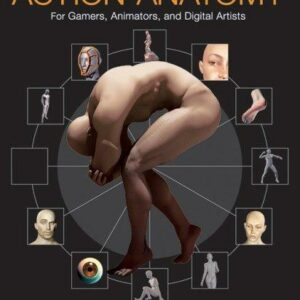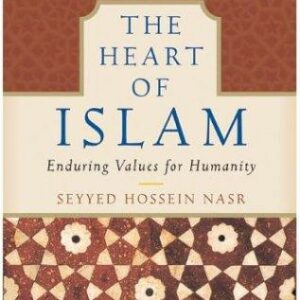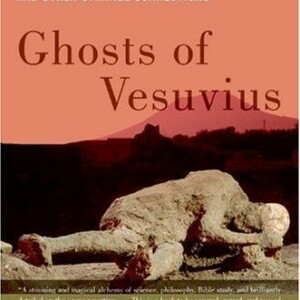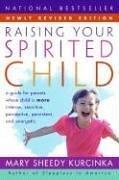The Kama Sutra of Vatsyayana
$20.00
| Title | Range | Discount |
|---|---|---|
| Trade Discount | 5 + | 25% |
- Description
- Additional information
Description
Sir Richard F. Burton’s translation of The Kama Sutra remains one of the best English interpretations of this early Indian treatise on politics, social customs, love, and intimacy. Its crisp style set a new standard for Sanskrit translation.
The Kama Sutra stands uniquely as a work of psychology, sociology, Hindu dogma, and sexology. It has been a celebrated classic of Indian literature for 1,700 years and a window for the West into the culture and mysticism of the East.
This Modern Library Paperback Classic reprints the authoritative text of Sir Richard F. Burton’s 1883 translation.“[The Kama Sutra is] tender, sage, and domestic.” —Fawn M. BrodieSir Richard F. Burton (1821–90) was a British explorer and writer. His translation of The Arabian Nights remains a classic.
Margot Anand, an internationally acclaimed teacher of Tantra, is the author of many bestselling books, among them Sexual Ecstasy: The Art of Orgasm and The Art of Everyday Ecstasy. She lives in California.Part I
The Vatsyayana Sutra
Introductory Preface
Salutation to Dharma, Artha, and Kama
In the beginning, the Lord of Beings created men and women, and in the form of commandments in one hundred thousand chapters laid down rules for regulating their existence with regard to Dharma,* Artha,? and Kama.? Some of these commandments, namely those which treated of Dharma, were separately written by Swayanshur Manu; those that related to Artha were compiled by Brihaspati; and those that referred to Kama were expounded by Naudi, the follower of Mehadeva, in one thousand chapters.
Now these ‘Kama Sutra’ (Aphorisms on Love), written by Nundi in one thousand chapters, were reproduced by Shevtaketu, the son of Uddvalaka, in an abbreviated form in five hundred chapters, and this work was again similarly reproduced in an abridged form, in one hundred and fifty chapters, by Babhravya, an inheritant of the Punchala (South of Delhi) country. These one hundred and fifty chapters were then put together under seven heads or parts named severally?
1st. Sadharana (general topics).
2nd. Samprayogika (embraces, etc.).
3rd. Kanya Samprayukteka (union of males and females).
4th. Bharyadhikarika (on one’s own wife).
5th. Paradarika (on the wives of other people).
6th. Vaisika (on courtezans).
7th. Aupamishadika (on the arts of seduction, tonic, medicines, etc.).
The sixth part of this last work was separately expounded by Dattaka at the request of the public women of Pataliputra (Patna), and in the same way Charayana explained the first part of it. The remaining parts, viz., the second, third, fourth, fifth, and seventh were each separately expounded by?
Suvarnanabha (second part).
Ghotakamukha (third part).
Gouardiya (fourth part).
Gouikaputra (fifth part).
Kuchumara (seventh part), respectively.
Thus the work being written in parts by different authors was almost unobtainable, and as the parts which were expounded by Dattaka and the others treated only of the particular branches of the subject to which each part related, and moreover as the original work of Babhravya was difficult to be mastered on account of its length, Vatsyayana, therefore, composed this work in a small volume as an abstract of the whole of the works of the above-named authors.
Chapter II
On the Acquisition of Dharma, Artha, and Kama
Man, the period of whose life is one hundred years, should practise Dharma, Artha, and Kama at different times and in such a manner that they may harmonize together and not clash in any way. He should acquire learning in his childhood, in his youth and middle age he should attend to Artha and Kama, and in his old age he should perform Dharma, and thus seek to gain Moksha, i.e., release from further transmigration. Or, on account of the uncertainty of life, he may practise them at times when they are enjoined to be practised. But one thing is to be noted, he should lead the life of a religious student until he finishes his education.
Dharma is obedience to the command of the Shastra or Holy Writ of the Hindoos to do certain things, such as the performance of sacrifices, which are not generally done, because they do not belong to this world, and produce no visible effect; and not to do other things, such as eating meat, which is often done because it belongs to this world, and has visible effects.
Dharma should be learnt from the Shruti (Holy Writ), and from those conversant with it.
Artha is the acquisition of arts, land, gold, cattle, wealth, equipages and friends. It is, further, the protection of what is acquired, and the increase of what is protected.
Artha should be learnt from the king’s officers, and from merchants who may be versed in the ways of commerce.
Kama is the enjoyment of appropriate objects by the five senses of hearing, feeling, seeing, tasting and smelling, assisted by the mind together with the soul. The ingredient in this is a peculiar contact between the organ of sense and its object, and the consciousness of pleasure which arises from that contact is called Kama.
Kama is to be learnt from the Kama Sutra (aphorisms on love) and from the practise of citizens.
When all the three, viz., Dharma, Artha, and Kama, come together, the former is better than the one which follows it, i.e., Dharma is better than Artha, and Artha is better than Kama. But Artha should always be first practised by the king, for the livelihood of men is to be obtained from it only. Again, Kama being the occupation of public women, they should prefer it to the other two, and these are exceptions to the general rule.
Objection
Some learned men say that as Dharma is connected with things not belonging to this world, it is appropriately treated of in a book; and so also is Artha, because it is practised only by the application of proper means, and a knowledge of those means can only be obtained by study and from books. But Kama being a thing which is practised even by the brute creation, and which is to be found everywhere, does not want any work on the subject.
Answer
This is not so. Sexual intercourse being a thing dependent on man and woman requires the application of proper means by them, and those means are to be learnt from the Kama Shastra. The non-application of proper means, which we see in the brute creation, is caused by their being unrestrained, and by the females among them only being fit for sexual intercourse at certain seasons and no more, and by their intercourse not being preceded by thought of any kind.
Objection 2
The Lokayatikas* say:?Religious ordinances should not be observed, for they bear a future fruit, and at the same time it is also doubtful whether they will bear any fruit at all. What foolish person will give away that which is in his own hands into the hands of another? Moreover, it is better to have a pigeon to-day than a peacock to-morrow; and a copper coin which we have the certainty of obtaining, is better than a gold coin, the possession of which is doubtful.
Answer
It is not so. 1st. Holy Writ, which ordains the practise of Dharma, does not admit of a doubt.
2nd. Sacrifices such as those made for the destruction of enemies, or for the fall of rain, are seen to bear fruit.
3rd. The sun, moon, stars, planets and other heavenly bodies appear to work intentionally for the good of the world.
4th. The existence of this world is effected by the observance of the rules respecting the four classes? of men and their four stages of life.
5th. We see that seed is thrown into the ground with the hope of future crops.
Vatsyayana is therefore of opinion that the ordinances of religion must be obeyed.
Objection 3
Those who believe that destiny is the prime mover of all things say:?We should not exert ourselves to acquire wealth, for sometimes it is not acquired although we strive to get it, while at other times it comes to us of itself without any exertion on our part. Everything is therefore in the power of destiny, who is the lord of gain and loss, of success and defeat, of pleasure and pain. Thus we see that Bali* was raised to the throne of Indra by destiny, and was also put down by the same power, and it is destiny only that can re-instate him.
Answer
It is not right to say so. As the acquisition of every object pre-supposes at all events some exertion on the part of man, the application of proper means may be said to be the cause of gaining all our ends, and this application of proper means being thus necessary (even where a thing is destined to happen), it follows that a person who does nothing will enjoy no happiness.
Objection 4
Those who are inclined to think that Artha is the chief object to be obtained argue thus. Pleasures should not be sought for, because they are obstacles to the practise of Dharma and Artha, which are both superior to them, and are also disliked by meritorious persons. Pleasures also bring a man into distress, and into contact with low persons; they cause him to commit unrighteous deeds, and produce impurity in him; they make him regardless of the future, and encourage carelessness and levity. And lastly, they cause him to be disbelieved by all, received by none, and despised by everybody, including himself. It is notorious, moreover, that many men who have given themselves up to pleasure alone, have been ruined along with their families and relations. Thus, King Dandakya,* of the Bhoja dynasty, carried off a Brahman’s daughter with evil intent, and was eventually ruined and lost his kingdom. Indra, too, having violated the chastity of Ahalya,? was made to suffer for it. In a like manner the mighty Kichaka,? who tried to seduce Dranpadi, and Ravana,§ who attempted to gain over Sita, were punished for their crimes. These and many others fell by reason of their pleasures.
Answer
This objection cannot be sustained, for pleasures, being as necessary for the existence and well being of the body as food, are consequently equally required. They are, moreover, the results of Dharma and Artha. Pleasures are, therefore, to be followed with moderation and caution. No one refrains from cooking food because there are beggars to ask for it, or from sowing seed because there are deer to destroy the corn when it is grown up.
Thus a man practising Dharma, Artha, and Kama enjoys happiness both in this world and in the world to come. The good perform those actions in which there is no fear as to what is to result from them in the next world, and in which there is no danger to their welfare. Any action which conduces to the practise of Dharma, Artha, and Kama together, or of any two, or even one of them, should be performed, but an action which conduces to the practise of one of them at the expense of the remaining two should not be performed.
Chapter III
On the Arts and Sciences to Be Studied
Man should study the Kama Sutra and the arts and sciences subordinate thereto, in addition to the study of the arts and sciences contained in Dharma and Artha. Even young maids should study this Kama Sutra along with its arts and sciences before marriage, and after it they should continue to do so with the consent of their husbands.
Here some learned men object, and say that females, not being allowed to study any science, should not study the Kama Sutra.
But Vatsyayana is of opinion that this objection does not hold good, for women already know the practice of Kama Sutra, and that practice is derived from the Kama Shastra, or the science of Kama itself. Moreover, it is not only in this but in many other cases that though the practice of a science is known to all, only a few persons are acquainted with the rules and laws on which the science is based. Thus the Yadnikas or sacrificers, though ignorant of grammar, make use of appropriate words when addressing the different Deities, and do not know how these words are framed. Again, persons do the duties required of them on auspicious days, which are fixed by astrology, though they are not acquainted with the science of astrology. In a like manner riders of horses and elephants train these animals without knowing the science of training animals, but from practice only. And similarly the people of the most distant provinces obey the laws of the kingdom from practice, and because there is a king over them, and without further reason.* And from experience we find that some women, such as the daughters of princes and their ministers, and public women, are actually versed in the Kama Shastra.
A female, therefore, should learn the Kama Shastra, or at least a part of it, by studying its practice from some confidential friend. She should study alone in private the sixty-four practices that form a part of the Kama Shastra. Her teacher should be one of the following persons, viz., the daughter of a nurse brought up with her and already married,? or a female friend who can be trusted in everything, or the sister of her mother (i.e., her aunt), or an old female servant, or a female beggar who may have formerly lived in the family, or her own sister, who can always be trusted.
The following are the arts to be studied, together with the Kama Sutra:?
1. Singing.
2. Playing on musical instruments.
3. Dancing.
4. Union of dancing, singing, and playing instrumental music.
5. Writing and drawing.
6. Tattooing.
7. Arraying and adorning an idol with rice and flowers.
8. Spreading and arranging beds or couches of flowers, or flowers upon the ground.
9. Colouring the teeth, garments, hair, nails and bodies, i.e., staining, dyeing, colouring and painting the same.
10. Fixing stained glass into a floor.
11. The art of making beds, and spreading out carpets and cushions for reclining.
12. Playing on musical glasses filled with water.
13. Storing and accumulating water in aqueducts, cisterns and reservoirs.
14. Picture making, trimming and decorating.
15. Stringing of rosaries, necklaces, garlands and wreaths.
16. Binding of turbans and chaplets, and making crests and top-knots of flowers.
17. Scenic representations. Stage playing.
18. Art of making ear ornaments.
19. Art of preparing perfumes and odours.
20. Proper disposition of jewels and decorations, and adornment in dress.
21. Magic or sorcery.
22. Quickness of hand or manual skill.
23. Culinary art, i.e., cooking and cookery.
24. Making lemonades, sherbets, acidulated drinks, and spirituous extracts with proper flavour and colour.
25. Tailor’s work and sewing.
26. Making parrots, flowers, tufts, tassels, bunches, bosses, knobs, &c., out of yarn or thread.
27. Solution of riddles, enigmas, covert speeches, verbal puzzles and enigmatical questions.
28. A game, which consisted in repeating verses, and as one person finished, another person had to commence at once, repeating another verse, beginning with the same letter with which the last speaker’s verse ended, whoever failed to repeat, was considered to have lost and to be subject to pay a forfeit or stake of some kind.
29. The art of mimicry or imitation.
30. Reading, including chanting and intoning.
31. Study of sentences difficult to pronounce. It is played as a game chiefly by women and children, and consists of a difficult sentence being given, and when repeated quickly, the words are often transposed or badly pronounced.
32. Practice with sword, single stick, quarter staff and bow and arrow.
33. Drawing inferences, reasoning or inferring.
34. Carpentry, or the work of a carpenter.
35. Architecture, or the art of building.
36. Knowledge about gold and silver coins, and jewels and gems.
37. Chemistry and mineralogy.
38. Colouring jewels, gems and beads.
39. Knowledge of mines and quarries.US
Additional information
| Weight | 7.2496 oz |
|---|---|
| Dimensions | 0.5500 × 5.1900 × 7.9400 in |
| Series | |
| Imprint | |
| Format | |
| ISBN-13 | |
| ISBN-10 | |
| Author | |
| Audience | |
| BISAC | |
| Subjects | sex book, kama sutra, sex manual, sex positions, health and wellness, health and fitness, medical books, spiritual books, hinduism, massage oil, anal sex, tantra, sex books, kamasutra, sexology, eros, sexy gifts, OCC041000, indian literature, kamasutra book, kama sutra book, dbf, erotic literature, eroticism, sanskrit literature, sex, history, philosophy, religion, HEA042000, healing, sexuality, wellness, spirituality, relationships, health, happiness, classic, Literature, love, classics, hindu, art, asia, india, reference, new age, aura, erotica, erotic |











